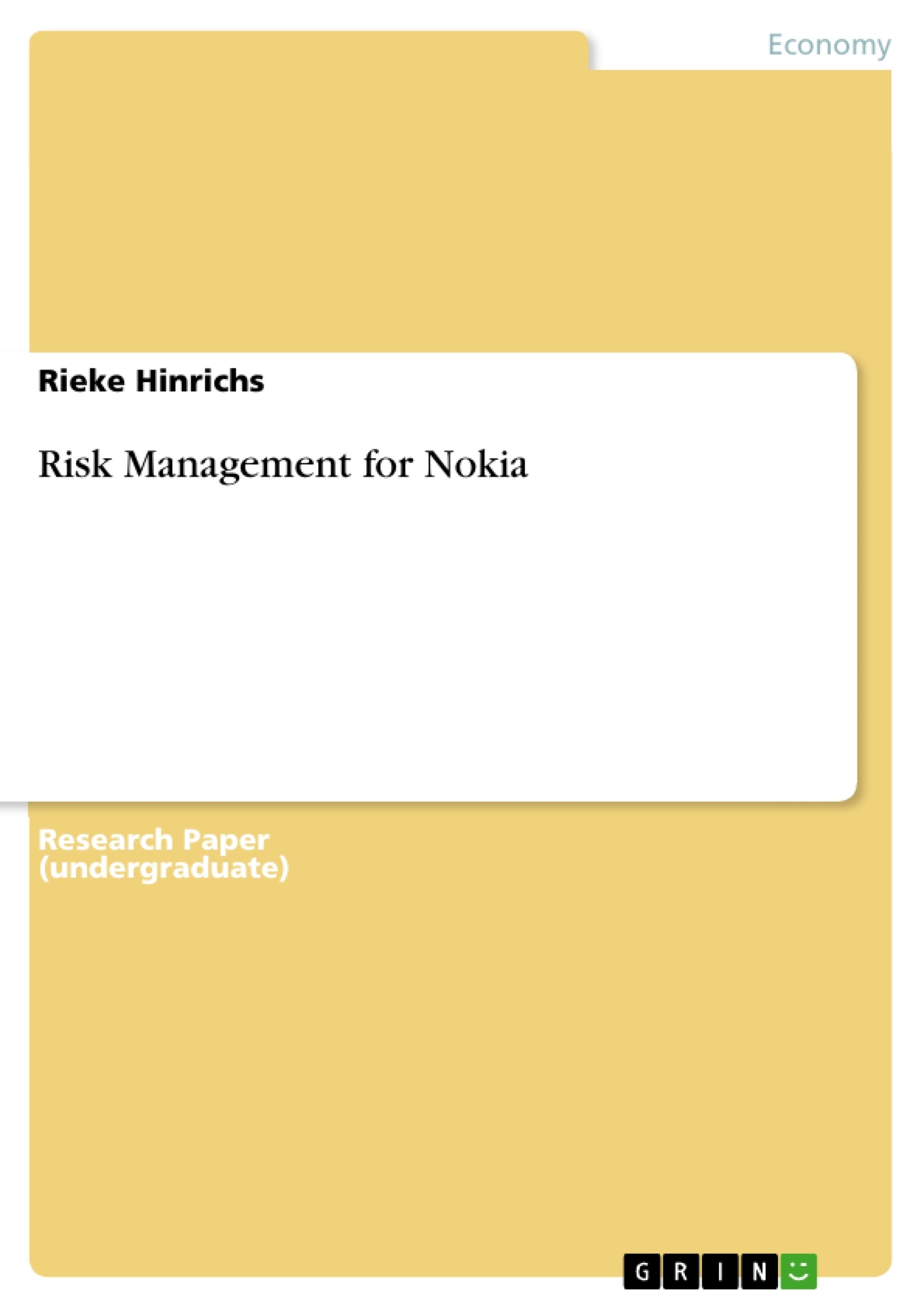Tremendous events like 9/11, the huge property/ banking/ debt/ euro crises, failing
projects like Heathrow Terminal 5 or the instable political situation in many countries of
the Middle East – just a few examples of events that have made people and
organisations more aware of risks and uncertainty. Therefore, risk management has
been gaining more and more in importance since the 1970s and is included in most
organisations’ policy nowadays. (Merna & Al-Thani, 2008, p.40 [Online])
However, even if the connotation of the word “risk” in our everyday language is quite
negative, risks do not just mean threats (also called “downside risks”) but they can also
provide opportunities (“upside risks”). (Woods, 2011, p.22)
Consequently, “avoiding a risk may mean avoiding a potentially huge opportunity”
(Frame, 2003, [Online]), which makes risk management a complex matter that is
essential to be considered thoroughly by every organisation that is interested in longterm
profitability.
Inhaltsverzeichnis (Table of Contents)
- Introduction
- Definitions and Concepts of Risk Management
- The Risk Management Process (Tools and Techniques)
- Different Types of Generic Risks
- Product and Market Risk
- Strategic Risk
- Financial Risk
- Equity Risk
- Liquidity Risk
- Political Risk
- Environmental Risk
- Reputation Risk
- Types of Risks that Nokia Faces
- Product and Market Risk
- Strategic Risk
- Financial Risk
- Liquidity Risk
- Equity Risk
- Political Risk
- Environmental Risk
- Reputation Risk
- Strategies for Nokia to Manage Risks
- Diversification & Product Development
- Alliances
- Market Research and Marketing
- Staff Development/ New Staff
- Insurances
- Sustainability
- Control, Observation & Assessment
- Conclusion
Zielsetzung und Themenschwerpunkte (Objectives and Key Themes)
This assignment examines the crucial role of risk management in a company's long-term success. It focuses on defining and understanding risk management concepts, analyzing different types of risks, and exploring practical strategies for managing these risks in the context of Nokia. The aim is to provide a comprehensive overview of risk management as a crucial tool for organizational resilience and sustainability.
- The evolving nature of risk management and its increasing importance in today's business environment
- Understanding and classifying different types of generic and company-specific risks
- Developing a framework for identifying, assessing, and responding to risks
- Analyzing strategies for risk mitigation and opportunity optimization
- The role of risk management in ensuring long-term profitability and organizational sustainability
Zusammenfassung der Kapitel (Chapter Summaries)
The introductory chapter highlights the growing relevance of risk management in today's complex business environment. It emphasizes the importance of considering both threats and opportunities associated with risk. The chapter introduces the fundamental concepts of risk management and explores various definitions.
Chapter 2 delves into the risk management process, outlining the key steps involved. This includes identification, assessment, treatment, reporting, and monitoring. The chapter discusses different tools and techniques used to manage risks, emphasizing the importance of a comprehensive approach that considers all relevant factors.
Chapter 3 examines various types of generic risks that organizations face. This includes risks related to products and markets, strategic decisions, finance, politics, environment, and reputation. The chapter provides insights into the potential consequences of these risks and their impact on organizational performance.
Chapter 4 focuses on the specific risks that Nokia confronts. It analyzes each category of risk mentioned in Chapter 3, highlighting Nokia's particular vulnerabilities and opportunities. This provides a concrete understanding of the risk landscape faced by the company.
Chapter 5 explores strategies that Nokia can employ to manage its identified risks. These strategies include diversification, alliances, market research, staff development, insurance, sustainability, and continuous monitoring and assessment. The chapter analyzes the effectiveness of each approach and its potential to mitigate risks and create opportunities.
Schlüsselwörter (Keywords)
The key concepts explored in this assignment include risk management, risk assessment, risk mitigation, risk appetite, strategic risk, financial risk, political risk, environmental risk, reputation risk, diversification, alliances, market research, staff development, sustainability, and organizational resilience.
- Quote paper
- Rieke Hinrichs (Author), 2013, Risk Management for Nokia, Munich, GRIN Verlag, https://www.grin.com/document/214797



